Big insects are hard to miss, especially big beetles. This summer I’ve encountered two big beetles I’ve never seen before–the ten lined June beetle and the white-spotted sawyer. Whether you’ve encountered these beetles before or not, now you’ll know their names.
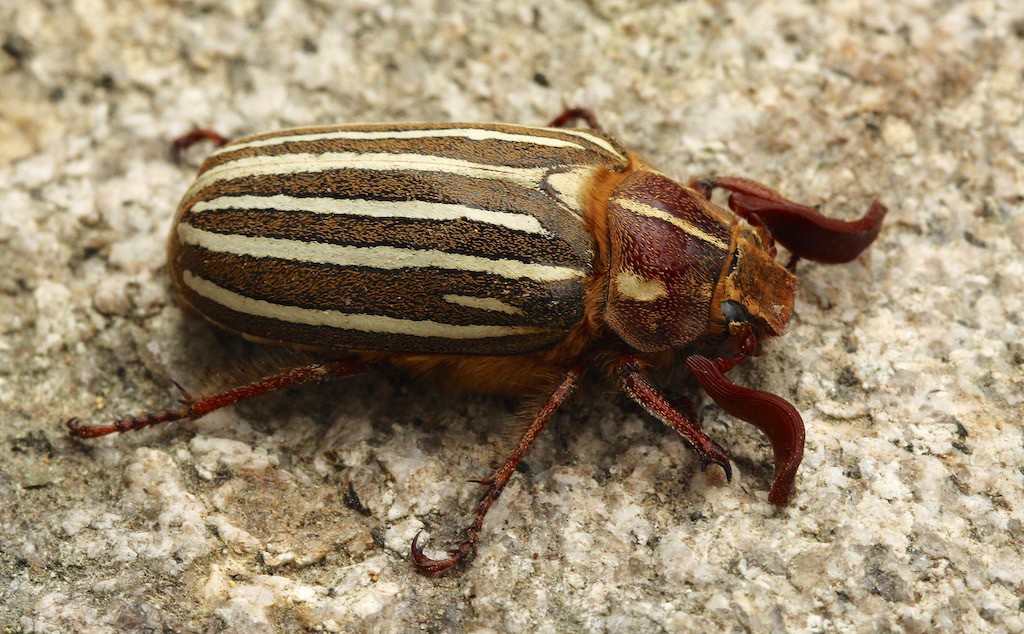
Ten-lined June Beetle (Polyphylla decemlineata)
June beetles are also called May beetles and July beetles because the adult beetles emerge in the summer, usually in late June and July. The large beetles are common in the Pacific Northwest.
Since June beetles are attracted to lights at night (mainly the males), they are often found under the same light source during the day. They are harmless even though they hiss and squeal loudly when handled.
Males can be differentiated from females by their large feathery antennae that spread open in a fan-like manner to detect the female’s pheromones.
Once the beetles mate, eggs are laid in the soil and the larvae feed on roots of grasses, perennial trees and shrubs but rarely cause significant damage. The larvae can grow to the size of a 50-cent piece when curled up.
In the fall, the larvae overwinter by moving deeper into the soil. As soil temperatures warm in the spring they move closer to the soil surface where they pupate.
The adults emerge to complete the life cycle and feed on foliage of various shrubs.

White-spotted sawyer (Monochamus scutellatus)
Long black antennae make the white-spotted sawyer look even larger. At about one-inch long, the shiny black beetles are decent-sized. Their name comes from the white spot behind their head at the base of the elytra (wing covers).
Males can be differentiated from females by their longer antennae–about twice the body length while female antennae are only slightly longer than the body. Males are also shiny black while females sometimes have a few mottled white spots on their elytra.
The adult beetles feed on tender twigs and needles of living conifers usually causing minimal damage.
On the other hand, the larvae can cause extensive damage to trees. They excavate galleries (tunnels) in coniferous trees that are dying, recently killed or felled, especially pines, spruce, true firs and Douglas-fir.
Once the eggs hatch in the bark of weakened trees, the larvae begin mining the bark, then the cambium layer and later into the sapwood and heartwood. The deep tunnels can degrade the value of the lumber considerably and also provide pathways for wood-decaying fungi to enter the tree.
By mid- to late summer the larvae mine deep into the tree to overwinter. Once warm spring weather arrives, the larvae resume feeding. They typically mine one to six inches from the surface before turning around and tunneling back towards the bark to make a pupal cell.
Right next to the surface, the pupal cell holds the pupae for two weeks until the adult beetle is ready to emerge by gnawing its way through the remaining bark. Adults typically emerge beginning in early June and peak in mid-July.
The life cycle in northern regions requires two years to complete but in southern regions only one year is required. The life cycle of the native white-spotted sawyer begins again when eggs are laid between early June and early September in slits in the bark of host trees.

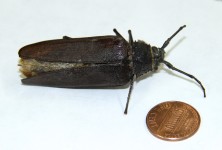
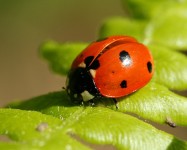
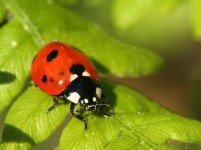
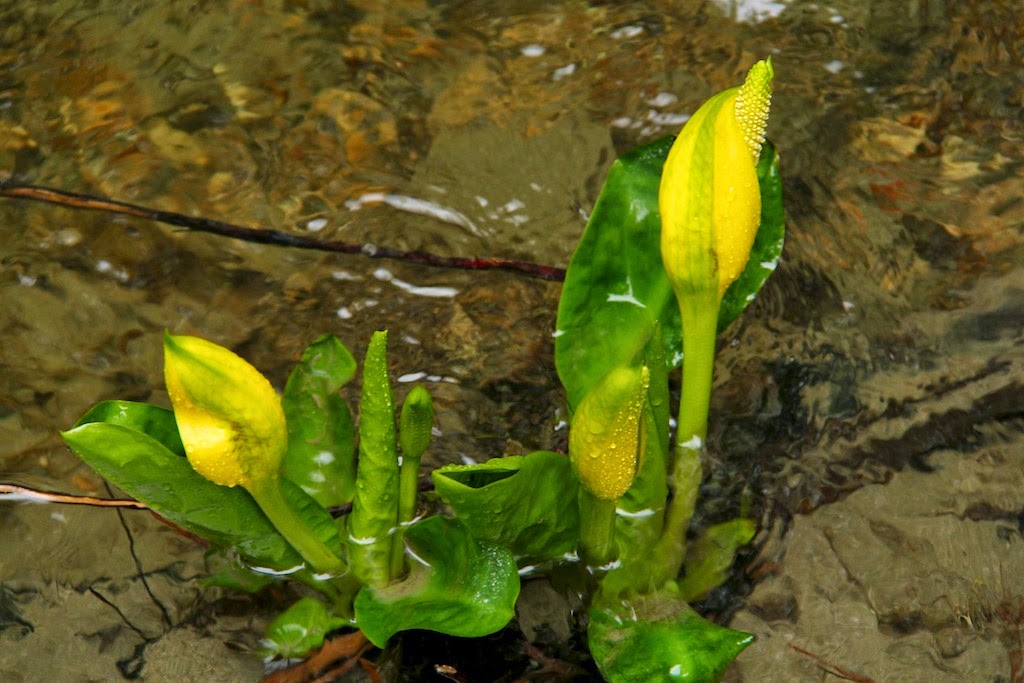
How bad is it to cut ponderosa in the summer for fire wood ?
If the ponderosa is still living (green), then you might want to let it dry until next winter. Standing dead ponderosa would be better for this winter’s firewood.
Laura